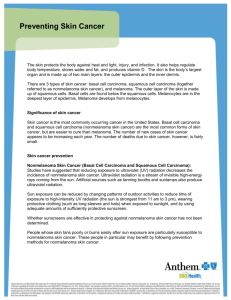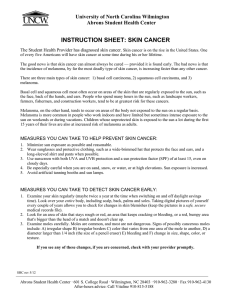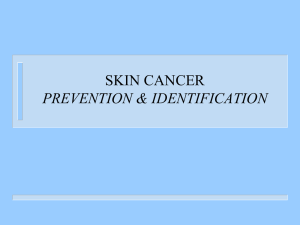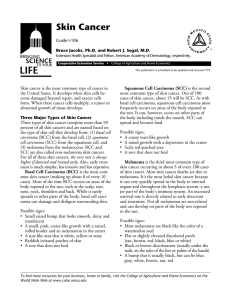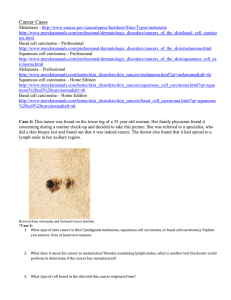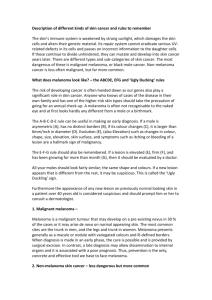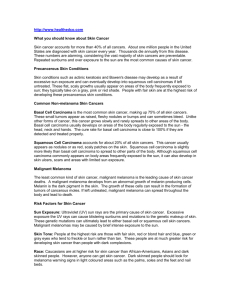Preventing Skin Cancer
advertisement
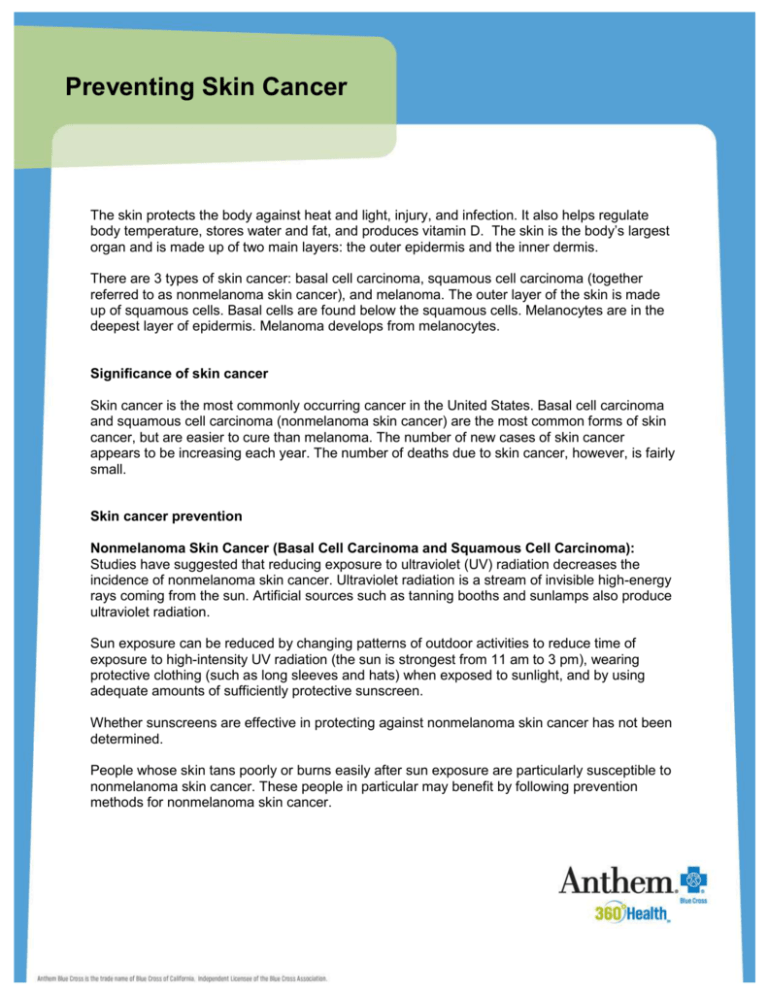
Preventing Skin Cancer The skin protects the body against heat and light, injury, and infection. It also helps regulate body temperature, stores water and fat, and produces vitamin D. The skin is the body’s largest organ and is made up of two main layers: the outer epidermis and the inner dermis. There are 3 types of skin cancer: basal cell carcinoma, squamous cell carcinoma (together referred to as nonmelanoma skin cancer), and melanoma. The outer layer of the skin is made up of squamous cells. Basal cells are found below the squamous cells. Melanocytes are in the deepest layer of epidermis. Melanoma develops from melanocytes. Significance of skin cancer Skin cancer is the most commonly occurring cancer in the United States. Basal cell carcinoma and squamous cell carcinoma (nonmelanoma skin cancer) are the most common forms of skin cancer, but are easier to cure than melanoma. The number of new cases of skin cancer appears to be increasing each year. The number of deaths due to skin cancer, however, is fairly small. Skin cancer prevention Nonmelanoma Skin Cancer (Basal Cell Carcinoma and Squamous Cell Carcinoma): Studies have suggested that reducing exposure to ultraviolet (UV) radiation decreases the incidence of nonmelanoma skin cancer. Ultraviolet radiation is a stream of invisible high-energy rays coming from the sun. Artificial sources such as tanning booths and sunlamps also produce ultraviolet radiation. Sun exposure can be reduced by changing patterns of outdoor activities to reduce time of exposure to high-intensity UV radiation (the sun is strongest from 11 am to 3 pm), wearing protective clothing (such as long sleeves and hats) when exposed to sunlight, and by using adequate amounts of sufficiently protective sunscreen. Whether sunscreens are effective in protecting against nonmelanoma skin cancer has not been determined. People whose skin tans poorly or burns easily after sun exposure are particularly susceptible to nonmelanoma skin cancer. These people in particular may benefit by following prevention methods for nonmelanoma skin cancer. Melanoma: It is not known if avoiding sunburns reduces a person's chance of developing melanoma skin cancer. Sunburn can be avoided by changing patterns of outdoor activities to reduce time of exposure to high-intensity UV radiation (the sun is strongest from 11 am to 3 pm), wearing protective clothing (such as long sleeves and hats) when exposed to sunlight, and using sunscreen. Sunscreen is not a substitute for avoidance of sun exposure. People whose skin tans poorly or who have a large number of abnormal moles may have an increased risk of developing melanoma skin cancer. These people in particular may benefit by following prevention methods for melanoma. For more information on protecting your skin, visit anthem.com/ca. Also visit the following sites: National Cancer Institute - www.cancer.gov American Cancer Society – www.cancer.org American Academy of Dermatology – www.aad.org Centers for Disease Control and Prevention – www.cdc.gov National Institutes of Health – www.nih.gov -----------------------------------------------------------Source: National Cancer Institute U.S. National Institutes of Health, www.cancer.gov This information is intended for educational purposes only, and should not be interpreted as medical advice. Please consult your physician for advice about changes that may affect your health.
